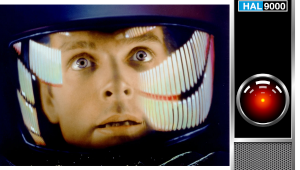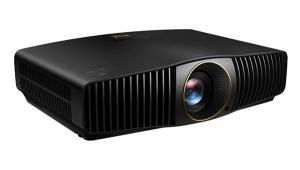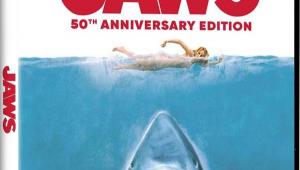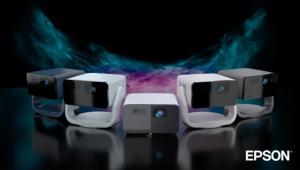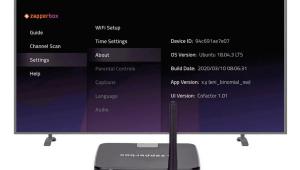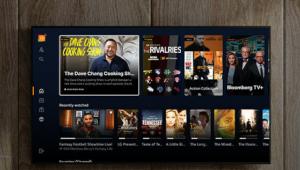Blu-ray vs. Streaming and Avoiding the Pre-Packaged Media Apocalypse

As it turned out that was correct, though I’m no soothsayer. It was simply a matter of following the money. The Internet was coming into its own, so using it in some way to sell music was a no-brainer (and probably changed Apple, just one of many home computer companies at the time, from a struggling enterprise into a media powerhouse). But this required drastic data compression Enter the MP3 music compression format and the rest is a history. MP3 downloads now dominate the music sales business.
Sad, yes, but only audiophiles seem to care about the way MP3 savaged the audio quality of music. Fortunately, a silver lining appeared: the appearance in the past few years of high resolution audio downloads promising audio that’s superior to what you’ll find even on uncompressed CD, much less on MP3.
Back to today. The Internet now can easily carry both audio and video. While audio-only over the net is generally in the form of a download (stored by the buyer for playback later, and as often as desired), video is generally “streamed”that is, it’s played back immediately, or nearly so.
Even more so than audio, video in any consumer form must be highly compressed. An HD movie on Blu-ray operates at a variable data rate depending on the needs of each scene, but most seem to average somewhere just above 20 Megabits per second. I’ve occasionally seen this top 30Mbps or higher. A useful source for this information, though I can’t vouch for its accuracy, is blu-ray.com. It’s an older site, but has obviously been updated since its launch.
But a streamed movie must use a much more restrictive bandwidth. Netflix, one of the major streaming services, typically drops the data rate to under 10Mbps, or even 5Mps). Movie streaming can be affected by other bandwidth-robbing variables as well, including whether your connection is wired or wireless, the quality of your Internet Service Provider (ISP), and even the time of day (with more demand for bandwidth, the available data rate inevitably goes down, and along with it, the quality). At least one streaming service, Amazon Prime, streams at 720p, which requires less bandwidth than 1080p. And since the available bandwidth varies depending on where you live, the source provider can’t simply choose the bandwidth offering the highest possible quality but rather must go lower (often much lower) to serve the most customers.
Audio for video can suffer as well. On Blu-ray we nearly always get either DTS-HD Master Audio or Dolby TrueHDboth offer lossless compression. But the best offering on most of the movie streaming services is lossy Dolby Digital Plus. DD+ can provide slightly better quality than plain vanilla Dolby Digital, depending on how the streaming service sees fit to employ it. But potentially enhanced audio quality wasn’t why DD+ was originally created. It was designed to offer quality equivalent to DD, but at roughly half the data rate. Streaming services, of course, lapped it up. While it’s likely that improvements to it have been made since then, do you really think that the movie streaming services are using it for anything other than the minimum audio quality they think you’ll tolerate, particularly since many if not most users under 30 were raised on MP3?
I’m highly prejudiced toward Blu-ray. I want packaged media to survive, and not only because it’s the only source good enough to provide repeatable real-world material for testing HDTVs.
I’ll readily admit that I’m highly prejudiced toward Blu-ray. I want packaged media to survive, and not only because it’s the only source good enough (and free of the unpredictable bandwidth issues mentioned above) to provide repeatable real-world material for testing HDTVs. It’s also a great format for multichannel music, an application for which it’s been sorely underused so far.
Blu-ray vs. Streaming
I admit that my personal experiences with movie streaming have been limited. So recently I tried comparing a movie streamed from Netflix with the Blu-ray equivalent. The display was my Panasonic TC-65ZT60 plasma, viewed from about 10-feet away. (At 8 feet the differences might have been more pronounced, but I found 8 feet to be uncomfortably close, as most viewers might. Oddly I don’t have a problem at 11 feet from my 96-inch wide projection screen, but the latter hasn’t yet been installed in my new home theater room).
For this test I picked out a couple of favorite recent Blu-rays with stunning visuals, Oblivion and Prometheus, but couldn’t find their equivalents on Netflix (Netflix’ streaming titles are apparently less extensive than those available from its still up-and-running mail service). So I chose an older title from the Netflix list that I knew to be an excellent, detailed transfer: Enemy at the Gates. I watched several key scenes, though because of the time required to switch from the Panasonic’s Apps menu to its Blu-ray input and back this was not as direct an A/B comparison as I’d prefer.
The results surprised me. The streaming version was totally watchable. It did not, as some have suggested, simply look like upconverted standard definition. The color was hard to criticize, there was no noise, and I didn’t spot any artifacts. It was clearly softer and less deeply detailed than the Blu-ray, but not in an obvious, “Wow, look at that” way. If I didn’t know the Blu-ray existed, I would have been happy to watch in this streamed version. Perhaps on a bigger screen, not so much, but on a 65-incher from a reasonable distance, yes.
But I do know that Blu-ray exists, and despite statements to the contrary, studios are not yet losing money selling them. I was a little alarmed recently to see that my local Best Buy was having a summer sale on BDs and DVDs, some of them at enticing prices. These included even newer movies and TV shows, but mostly catalogue titles. I was concerned because I feared at first that Best Buy was unloading their stock and planning to get out the Blu-ray / DVD sales business. But there were still many new titles on the shelves.
Many movie fans are collectors, and a movie that streams and then disappears, or even gets downloaded to some sort of storage for future viewing, doesn’t have the same collectable cache as a disc in its cover sitting on a bookcase. The question is, will the market for such packaged media, long term, remain big enough to survive.
With more plentiful, streamed Ultra HD sources coming soon, can UHD Blu-ray, which we expect to see late this year or early next, prolong the life of packaged media, perhaps pulling conventional Blu-ray along by its coattails? I sincerely hope so. The early days of streamed UHD are likely to be ugly. It will require even more compression than 1080p, particularly if they add enhanced color and high dynamic range to the mix, and the quality of the new, more efficient HEVC codec planned for UHD is still something of an unknown quantity. And as many have found with high res audio downloads, what you get is not always what you expect. Too many high res audio downloads don’t make optimum use of the format, and a few are even reportedly CD quality that’s been “upconverted.” That could happen with streamed UHD as well. In any case, even if done properly, it’s very possible that some titles not only won’t look like UHD after they leave the streaming pipeline, but might not even equal the quality of 1080p Blu-ray. Unfortunately, most of the public won’t notice; if it’s advertised as 4K, they’ll likely accept it.
That’s where UHD Blu-ray just might carve out its own place in the sun. I certainly want UHD Blu-ray to succeed (and hope the industry realizes that for it to do so, they can’t charge boutique prices—we don’t need another LaserDisc business plan). Even now I like the idea of being able to pull out any title from my extensive collection to sit down and watch either the whole thing or (in the case of already watched titles) favorite scenes. I want to do that in UHD as well. But one way or another, with a 1000 disc collection (just over half of them Blu-rays) I’ll at least be ready for any pre-packaged media Apocalypse.










